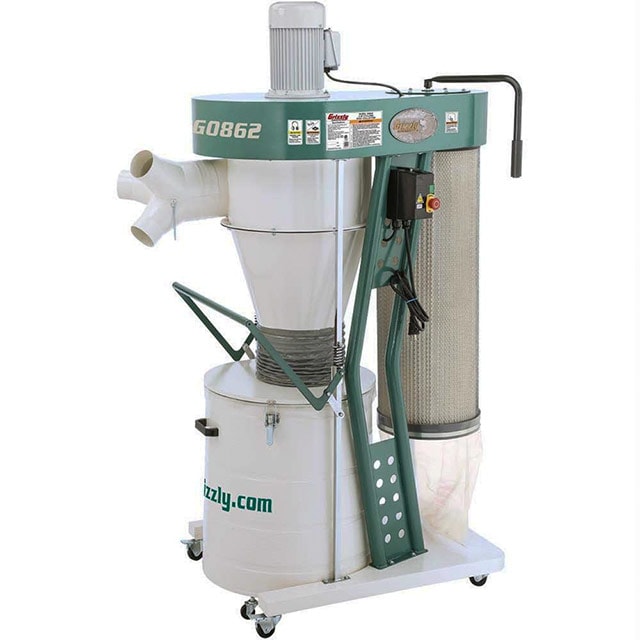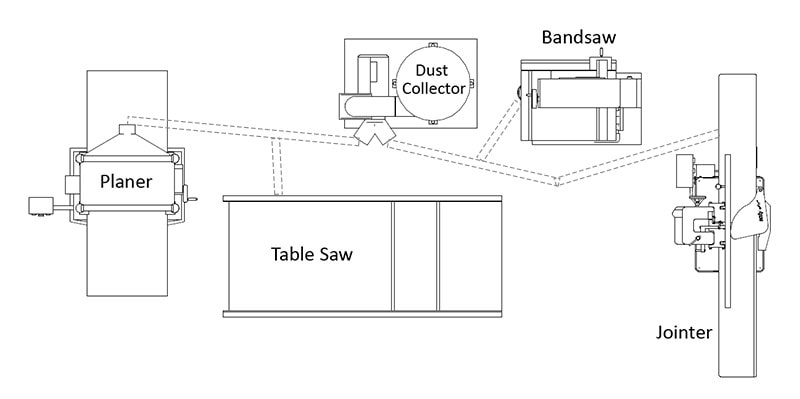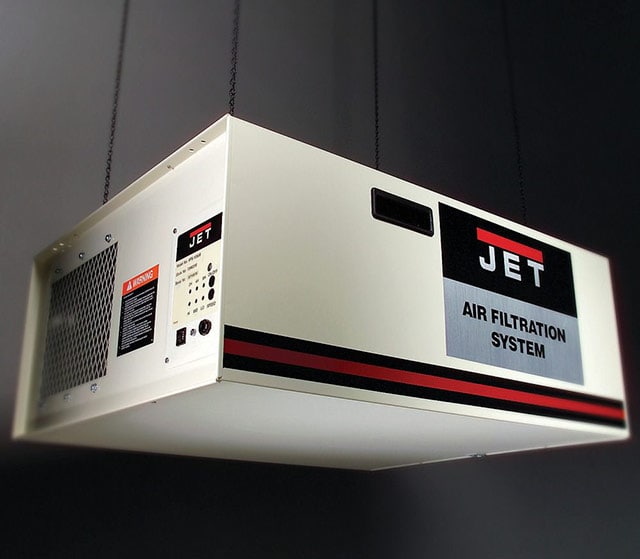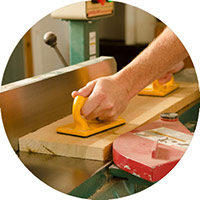Buying a Dust Collection System for Woodworking
Which shop dust collection system is best? Joshua shares advice on buying dust collector systems for woodworking
![]() By Joshua Farnsworth | Updated Mar 01, 2022
By Joshua Farnsworth | Updated Mar 01, 2022
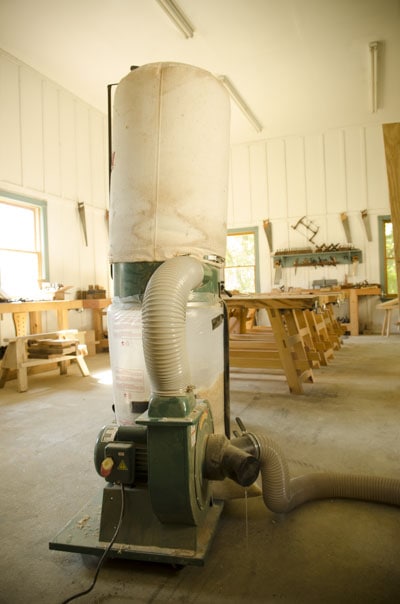
Buying a Dust Collection System for Woodworking

Which shop dust collection system is best? Joshua shares advice on buying dust collector systems for woodworking
![]() By Joshua Farnsworth | Updated Mar 01, 2022
By Joshua Farnsworth | Updated Mar 01, 2022
One of the most important purchases to make in a workshop that uses woodworking power tools is a dust collection system.
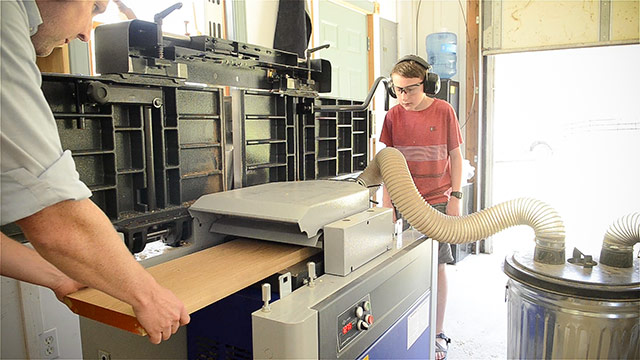
The fine dust produced by woodworking machinery can cause respiratory problems and even cancer. Protecting your lungs should be a major priority. Dust collector systems help to reduce the amount of dust in your workshop.
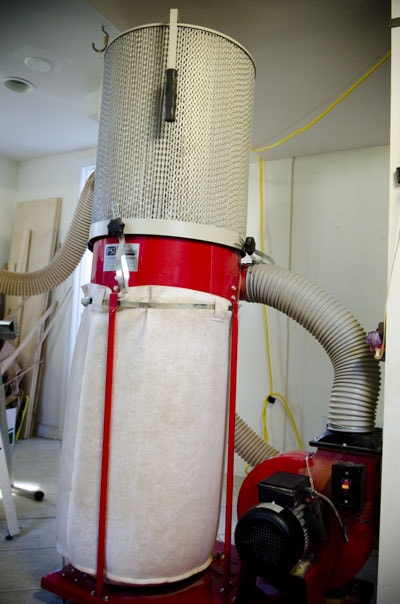
If you’re just using small power tools, like orbital sanders or routers, then a shop vac dust collection system will work. But for the big machines you’ll need to upgrade to a good shop dust collection system. The type of dust collector that you buy will depend on your budget and on how many feet of ductwork you’ll be needing. The more ductwork you require, the higher the cost.
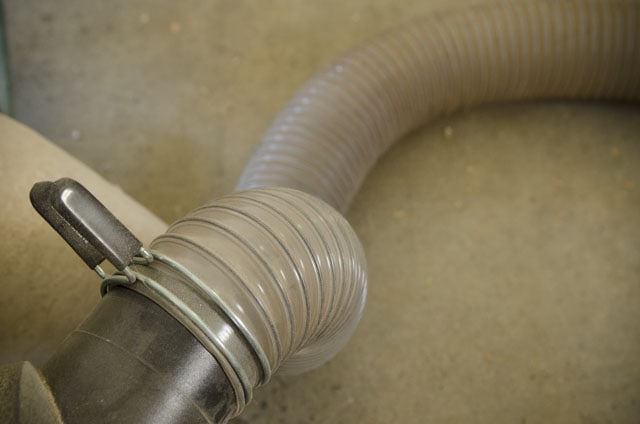
A single stage shop dust collection system (pictured above) brings the dust and chips directly into the filter bag. A two stage shop dust collection system (often marketed as “Cyclone”) first passes the big chips over a can, where the majority of the sawdust falls, before it sends the finer particles to the filter. Two stage dust collectors are more efficient, usually more powerful, have finer micron filters, and are more expensive. If you have to run flexible hoses or duct work long long distances between power tools, then a two stage dust collector is best for you. If you’ve got extra money and want a more protective dust collector, and one that is easier to empty (can vs. bag), then buy a two stage dust collector. See the photo below:
But if your machines are localized in a smaller area, you don’t need to run long lengths of hose or ducting, and you’re on a tighter budget, then a single stage dust collector will suffice for you.
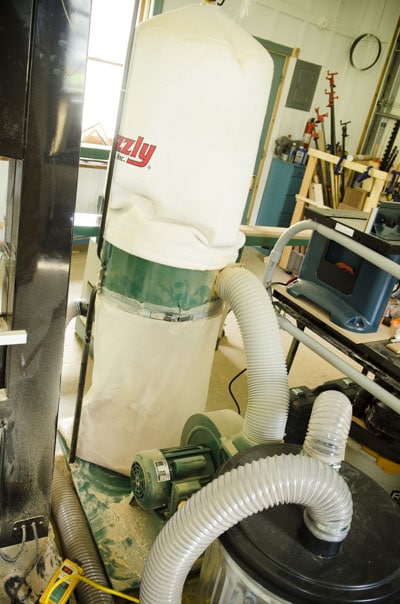
And for cheapskates like me, I was able to modify a single stage dust collector to act more like a two stage dust collector (see the photo above). It’s not as powerful or protective, but it works pretty well until I get more money to upgrade to a 2HP or 3HP cyclone dust collector. This is what I did:
Because my workshop is also a woodworking school, all my power tools and dust collection system need to be mobile. Single stage dust collectors are more mobile than the more expensive double stage dust collectors. When classes are not in session, I roll my woodworking machines into place, and I move my dust collector in the middle of all the machines. So the distance between the dust collector and each machine isn’t very long (2-6 feet).
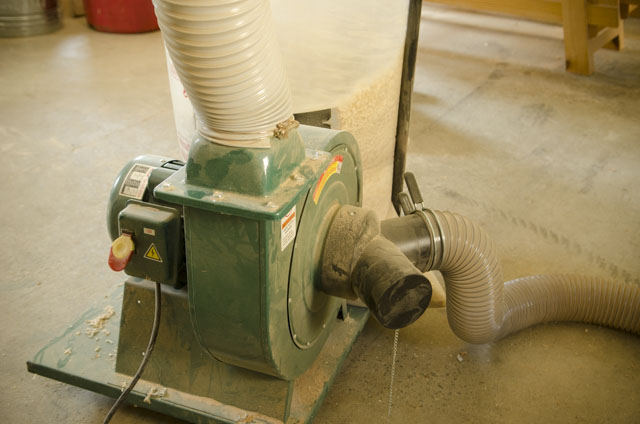
But I have added a trash can and this trash can cyclone lid, so I needed to add a little more horse power to get the dust and wood chips all the way through my system. In the past I’ve used a 1HP dust collector before, and felt that it wasn’t going to be powerful enough for my setup. So I settled on a 1.5HP dust collector that would give me suitable power, and it would work with my budget. Here are the parts that I put together for my dust collection setup:
- I bought this 1.5HP Grizzly dust collector
- I bought this trash can cyclone lid
- I bought a metal trash can at a local hardware store that fit the above cyclone lid.
- I bought these plastic dust collector bags that fit my dust collector, so I didn’t have to buy the much more expensive Grizzly bags.
- I bought this 4-inch x 20-foot flexible PVC hose. If you need a longer length, here’s a good 4-inch x 50-foot hose.
- I bought these 4-inch hose clamps to connect the PVC hose to each machine’s dust port.
- I bought these connectors for junctions between machines and the dust collector:
- I bought several of these 4-Inch Blast Gates to isolate suction only to the machine that I’m using at the time.
- I bought this 4-inch 90 Degree Elbow Hose Connector and this 4-inch clamping flex cuff to connect my thickness planer to the dust collector, and to keep the hose out of the way of the exiting lumber.
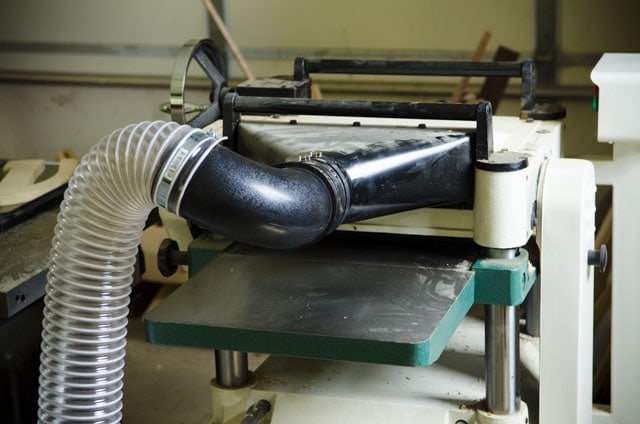
Before putting together a dust collection system, I suggest that you sketch out the layout of your woodworking machines, and measure the distances of hose that you’ll need. Also figure out which connectors you may need. Here’s a sketch of my woodworking machinery setup and dust collection:
My dust collector isn’t the only good model on the market. There are some other good models, and some that I’d like to upgrade to eventually.
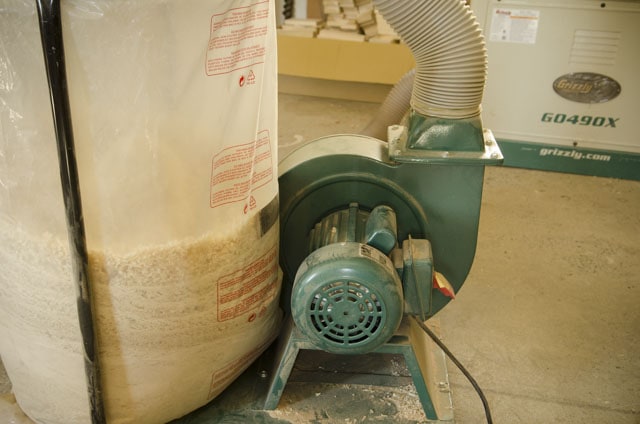
First, I’ll share some Grizzly dust collector models (since I feel that they are the best value for your money) that are practical for a home workshop. I won’t be sharing 1HP dust collectors, since I don’t feel that they’re strong enough:
- Single Stage Dust Collectors:
- About $550 w/ shipping & tax: Grizzly G1028Z2 1-1/2 HP Dust Collector (this is mine)
- About $730 w/ shipping & tax: Grizzly G0548ZP 2 HP Canister Dust Collector
- Double Stage Dust Collectors (i.e. “cyclone”):
- About $927 w/ shipping & tax: Grizzly G0860 1-1/2 HP Portable Cyclone Dust Collector
- About $1,216 w/ shipping & tax: Grizzly G0861 2 HP Portable Cyclone Dust Collector
- About $1,558 w/ shipping & tax: Grizzly G0862 3 HP Portable Cyclone Dust Collector
- About $1,959 w/ shipping & tax: Grizzly G0441 3 HP Cyclone Dust Collector (this is the one I’d like to eventually upgrade to)
- Here you can see other brands of dust collectors:
Air Filtration Systems:
Another helpful dust extraction accessory to add to your workshop is a remote-controlled hanging air filtration system. Workshop air filters will suck in the dust that didn’t get caught by your dust extractor. You can turn on the air filter while using machinery, while sanding, or while sweeping, and let it run for however long you want, until the timer shuts it off. There are some good filter systems for quite good prices. Just look at the specs on each air filter to make sure you get one that’s big enough for your workshop. Some of them are affordable enough to add a second filtration unit for a larger workshop. Here are some popular air filtration units to compare:
- WEN 3410 3-Speed Remote-Controlled Air Filtration System (300/350/400 CFM): $126 at Amazon
- JET 708620B AFS-1000B 550/702/1044 CFM 3-Speed Air Filtration System with Remote and Electrostatic Pre-Filter: $359 at Amazon
- POWERTEC AF4000 Remote Controlled 3-Speed Air Filtration System (300/350/400 CFM): $190 at Amazon
- Rikon Air Filtration 400: $201 at Amazon
- Grizzly G0738 – Hanging Air Filter, 3-Speed: $220 at amazon
TOOL GUIDE SHORTCUTS:

HAND TOOL BUYER’S GUIDES
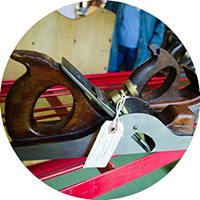
- Intro to Buying Woodworking Hand Tools
- Workbench & Tool Storage
- Layout, Marking, & Measuring Tools
- Handplanes
- Handsaws
- Chisels
- Sharpening & Honing Supplies
- Mallets & Hammers
- Hand Drills, Braces, & Bits
- Tools for Curved Work
- Tools for Green Woodworking
- Woodworking Clamps, Gluing & Fasteners
- Tools for Wood Carving
- Products for Wood Finishing, Sanding & Scraping
- Wood Turning Tools & Lathes

